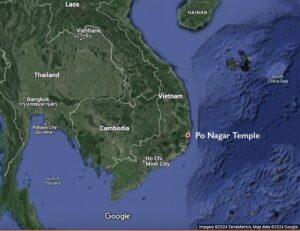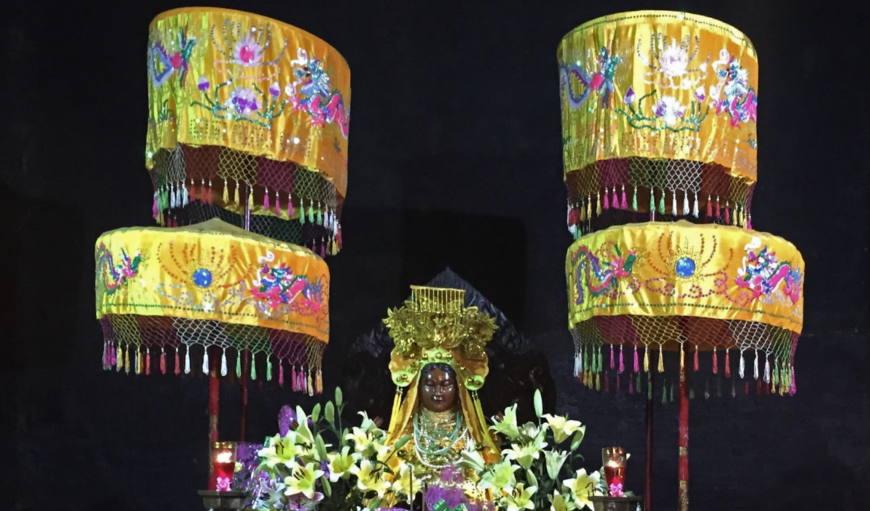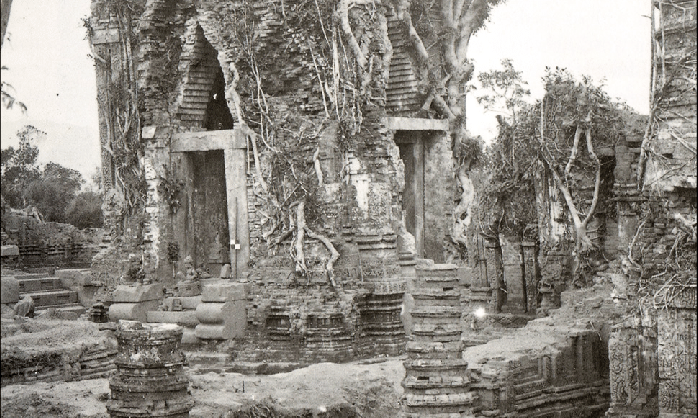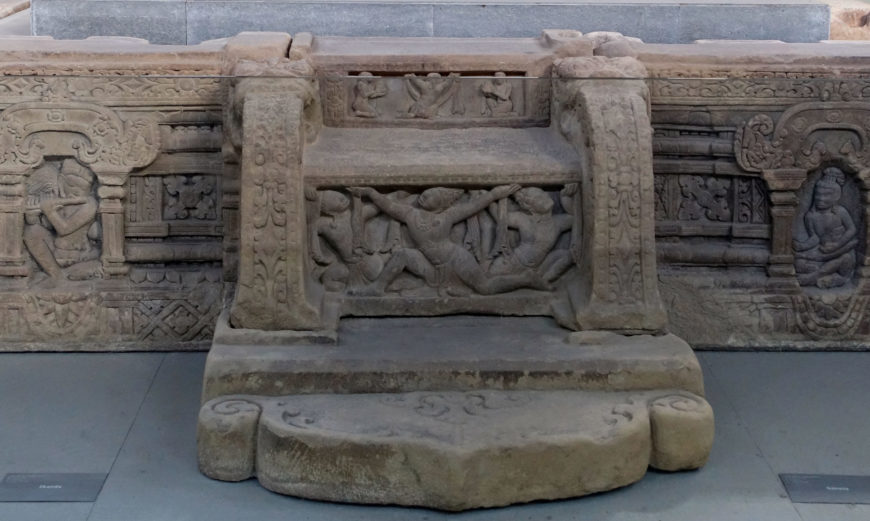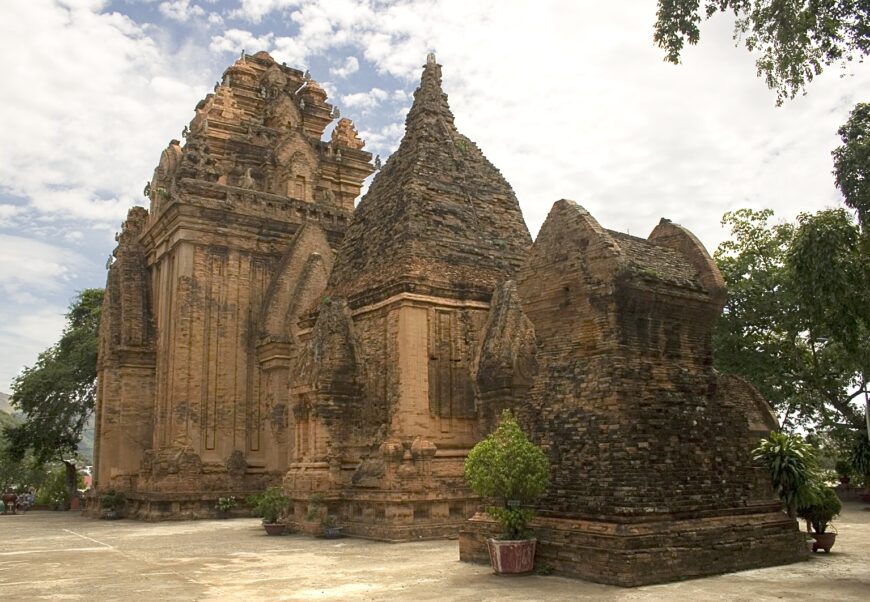
Po Nagar Temple, Nha Trang, Vietnam (photo: Petr & Bara Ruzicka, CC BY 2.0)
The majestic Cham temple complex of Po Nagar is situated at the mouth of the Cai River close to the South China Sea establishing a relationship between the sacred temple and water. In Cham religious practice, water was essential for the enactment of ritual ceremonies and the bathing of deities. The Po Nagar complex’s proximity to the Cai River and the sea is therefore important.
The ancient temple is located in the coastal city of Nha Trang, Vietnam, once known as Kauthara. Scholars believe that the temple was the result of royal patronage and although the consecration date of the temple is not known, an 8th-century inscription on the Po Nagar Stele mentions that the site was plundered in 744 C.E. by invaders who arrived on ships. Inscriptions also indicate that the Cham ruler, Harivarmadeva, restored the temple in 935. The temple remained active until the 13th century. [1]
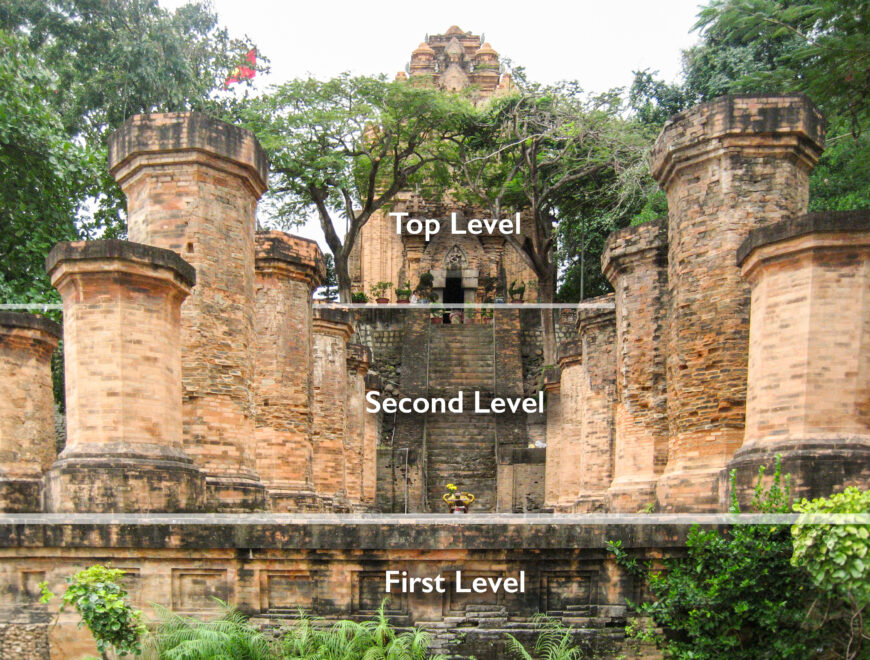
Stepped entrance to Po Nagar Temple, Nha Trang, Vietnam (photo: Arian Zwegers, CC BY 2.0)
The complex is built on three levels that rise steeply up the hill. Originally, there were six temple shrines at the topmost level (today only four remain), each symbolizing the sacred mountain, Mount Meru, which is considered to be the center of the spiritual universe. The first level would have originally included a gateway which no longer exists. The second level consists of a pathway formed by ten large pillars and twelve smaller pillars that direct worshipers and visitors to the third level.
Today, when worshipers and visitors make their way to the top level, they will come to four of the original six temple shrines. These shrines labeled as A, B, C, and F on the diagram are dedicated to the Hindu deities: Po Nagar, Shiva, Skanda, and Ganesha, respectively. This essay will focus on the larger shrine which is dedicated to the mother goddess Po Nagar (shrine A).
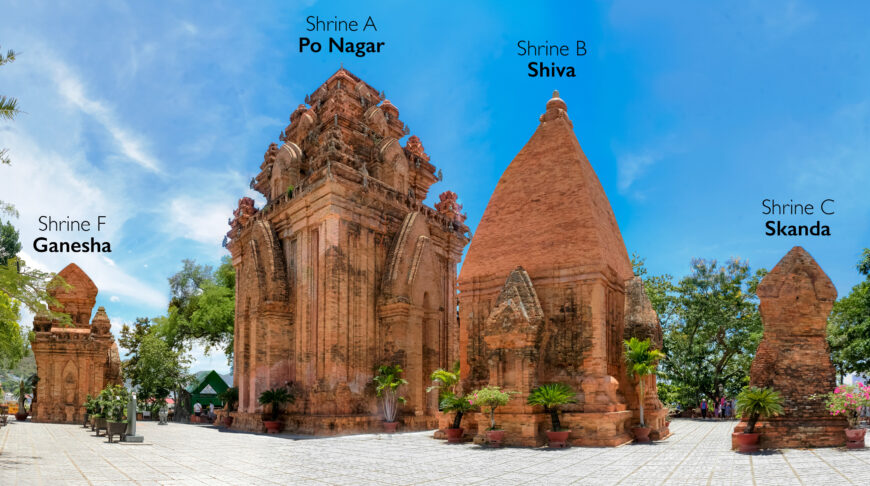
Diagram showing the four shrines at Po Nagar Temple, Nha Trang, Vietnam (photo: Makarenko Sasha, CC-BY-SA-3.0)
Ancient myths and goddesses
Based on ancient Cham myths, the mother goddess Po Nagar was born from the sky and the sea and was believed to have created the Earth, agarwood, and rice. [2] Both agarwood and rice were important to the lives of the Cham. Agarwood, a resinous wood used for incense and perfumes, was a luxury trading good. Po Nagar is believed to have taught the people of the region how to cultivate crops and produce handicrafts.
The location of the Po Nagar complex beside the Cai River suggests the importance of water in ritual ceremonies and for the agriculture of rice crops. At the temple complex, the goddess’s importance is expressed through her shrine which is the largest of the six. Moreover, it is her shrine that first greets the visitor after their ascent from the first and second levels.
The many charming goddesses of Champa
The Chams worshiped the mother goddess Po Nagar who the Vietnamese honor as Thiên Y A Na, a local folk goddess. [3] Some have associated this figure with the Hindu goddesses Bhavagati, Durga, or Uma. She is a cosmopolitan goddess who features in the local beliefs of different communities in Vietnam. The migration of new communities over time reshaped the identities of local deities.
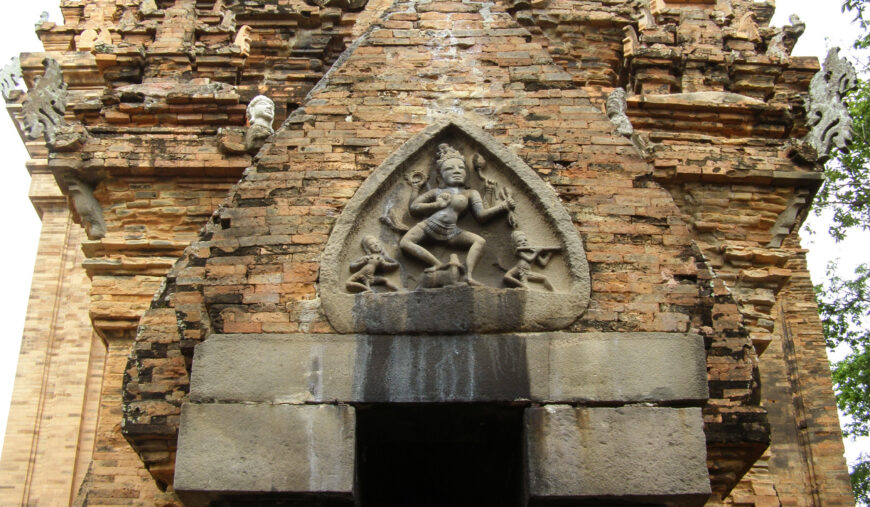
Hindu Goddess Durga, Po Nagar Temple, Nha Trang, Vietnam (photo: RG72, CC BY-SA 4.0)
For example, a sandstone lintel above the doorway of the shrine depicts the Hindu goddess Durga who is associated with protection and destruction. The figure is shown with a crown, standing in a pose of victory over the buffalo demon, Mahisha, who she has just vanquished. Durga is depicted with four arms, carrying three emblems of power. In one of her left hands, the goddess grips a vajra, one of the most powerful ritual weapons in the universe. It is characterized as a type of round club with a ribbed spherical head on either end that visualizes the properties and strengths of the diamond and the thunderbolt. In the other left hand she carries a lotus flower which symbolizes purity and rebirth. In one of her right hands she holds wisdom beads that represent sacred knowledge while her other right hand is held up with her palm facing outward, a mudra that means fearlessness.
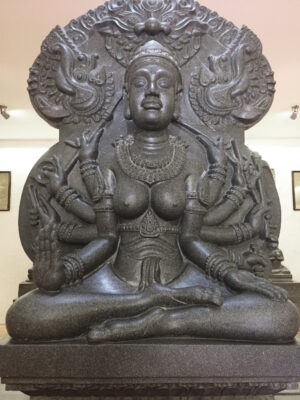
The goddess Po Nagar (replica), 10th century (Po Nagar Temple exhibition hall, Nha Trang; photo: Роман Курносенко, CC BY-SA 4.0)
Two smaller figures flank the goddess emphasizing her power and her victory, aspects that are also expressed by her powerful posture. The smaller figure on the left is shown dancing while the figure to the right is playing a flute. Musicians and dancers are also prominently illustrated at the contemporaneous Hindu temple complex of Mỹ Sơn, a temple that honors the patrilineal realm of the Hindu God Shiva. Greeted by the goddess above the doorway, visitors enter into the sacred space of the matrilineal realm dedicated to Po Nagar. Durga is one of the most powerful goddesses in the Hindu pantheon as the protective mother of the universe.
Inside the temple, one finds a statue of the goddess Po Nagar who continues to be worshiped as a local goddess. This statue was added to the shrine later in the 10th century. Originally, worshipers would have paid their respects to a carved sculpture of Po Nagar which continues to reside in the shrine, but is now situated behind the more recent statue. A replica of the original sculpture is also displayed at the exhibition hall of the Po Nagar Temple site where visitors can better decipher the goddess’s iconography.
One can see that the original sculpture depicts Po Nagar with eight arms, holding emblems of power. She is shown wearing jewelry such as bracelets, armlets, diadems, necklaces, and a crown. Three makaras surround the goddess in frontal and profile views. On the back of the statue, there is a decorative pedestal with patterns and motifs.
Returning to the later statue, this figure’s face has been highlighted with the color brown, while every other part of the statue is adorned with cloth or flowers. She also wears an elaborate golden and bejeweled headdress. Four umbrellas frame the statue, marking her importance as do gifts of plants, incense holders, and fruit. The inclusion of both the original icon and a later statue was deliberate, allowing worshipers to admire the entire ancient icon which would otherwise be covered in flowers and garlands while the newer figure provides opportunities for ritual and ceremonial practice.
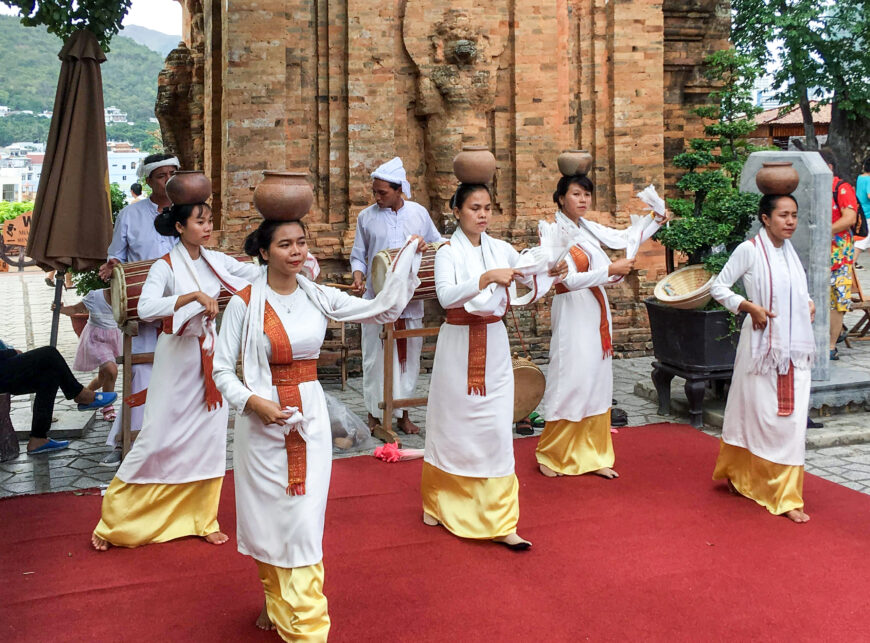
Po Nagar Festival, Po Nagar Temple, Nha Trang, Vietnam (photo: Christophe95, CC BY-SA 4.0)
Contemporary Cham festivals at Po Nagar Temple
Today there are many rituals and ceremonies at the Po Nagar Temple. The most well-known is the Po Nagar Festival, held annually based on the lunar calendar in March, attracting thousands of visitors and worshipers every year. The purpose of the festival is to commemorate Po Nagar as a mother goddess associated with crop cultivation and handicrafts. Activities include Cham dance performances, presentations of the sounds of drums, incense offerings, and ritual dedications to Po Nagar. During the Cham dance performances, the women dancers wear colorful attire and perform complex movements. Worshipers offer donations including baskets of fruits, flowers, and incense. The vibrant community of local people continue to ensure that the exquisite Po Nagar Temple and the legacy of the goddess Po Nagar endure.


